Course Review – Rusted Rail
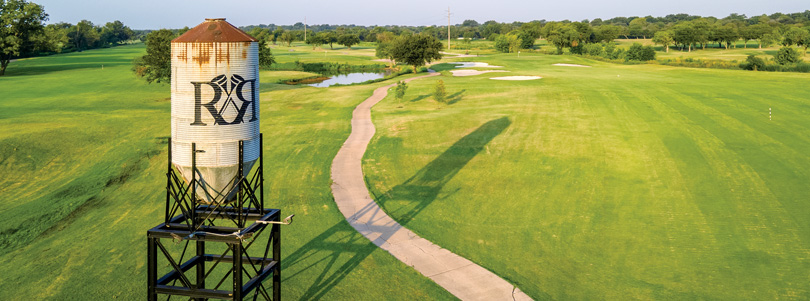
Rusted Rail in Crandall is now more than a half decade removed from its ownership change, renovation and rebranding. In August 2018, the property added Champion Bermuda greens, a new irrigation system, new cart paths, on-course restrooms and a new improved clubhouse that has become the epicenter of this fun and affordable experience.
Originally opened back in the mid-1990s, Rusted Rail features meandering streams and water features that come into play on several holes, adding to the aesthetic, along with the mature oak trees that frame fairways beautifully and provide not only challenge, but plenty of shady spots to escape the brutal summer heat. Fairways, bunkers and greens are all finely manicured and, despite the recent run of triple-digit temps, the course is in very good condition and should only improve as the cooler fall months approach.
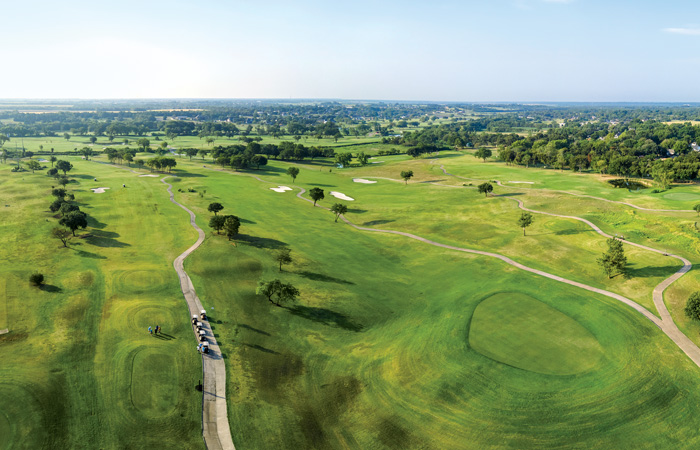
The opening hole of this 7,249-yard, par-72 layout offers a look at some of the unique topography, as the players descend from the clubhouse down to the meadows below. The 426-yard par-4 doglegs slightly left and requires a tee shot that splits a pair of fairway bunkers. A prevailing south wind can mean the approach plays a bit more than the number, so be aware that you might need to take an extra club.
No. 2 is arguably one of the toughest tee shots on the course. Playing across Buffalo Creek, this hole runs parallel to US-175 and features a large net to the left of the fairway to prevent errant shots from careening down the highway. A small grove of trees just in front and to the left of the teeing area makes this a bit of an awkward tee shot, as most right-handed players will need to launch a slight draw to avoid them, as well as another large tree that hangs over the right side of the landing area. A fairway metal or hybrid is a good choice to play for position, but be aware that as with No. 1, the second also plays into the wind, so choosing a more conservative play off the tee could lead to a long approach.
The front nine at Rusted Rail features several risk/reward shots, and with a pair of par 5s at No. 3 and No. 5, you can see early in the round that being aggressive can definitely lead to lower scores. The short par-4 sixth also offers an opportunity to add a circle to your scorecard. Playing at just 334 from the tips, longer hitters can mail a driver up near the green. However, be aware there is significant bunkering near the putting surface that can erode your opportunity at birdie, should you find one. Should you choose to lay up with something more conservative, a shot that plays just right of the small water tower in front of the tee is a great target line.
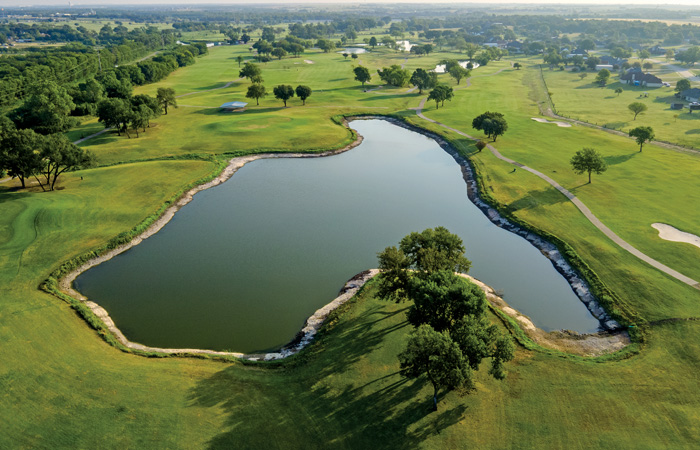
No. 8 is one of my personal favorites on the outward nine. The tee shot will usually play down-wind, meaning the 383 yards on the card actually plays a little shorter. There is a speed slot just over the far fairway bunker on the right, meaning a well-placed tee shot can chase up close to the green. But beware, there is a small pond guarding the front left of the putting surface, so anything down the left side of the fairway can tumble all the way to the water. There is a bit of room right, but be prepared to find some tough lies and some difficult wire grasses in that direction should you miss on that side.
The ninth is another par 3 that plays back up the hill to the clubhouse. This 177-yarder plays a little longer than it appears on the card. This hole usually offers a right-to-left wind, which can send balls toward the pavilion behind the green or even the parking lot, should you happen to catch one a little skinny. A pair of bunkers short right and short left guard the green, so coming up short is no bargain either. It requires a solid shot should you want to walk away with a par.
I would have to say my personal favorite stretch on the inward nine would have to be Nos. 13-15. The par-3 13th hole can stretch its legs to 211 yards from the back tees, and a large pond on the right adds visual stimulus and difficulty. This hole plays back into a predominant quartered off the right wind, which helps players keep balls out of the drink, but it also means a lot of iron shots will come up short. A small tree blocks out the green, so the tee shot can be a bit of a guessing game. The goal here should be taking enough club to hit the middle of the green and try to hole a putt. Being too aggressive can lead to bigger numbers.
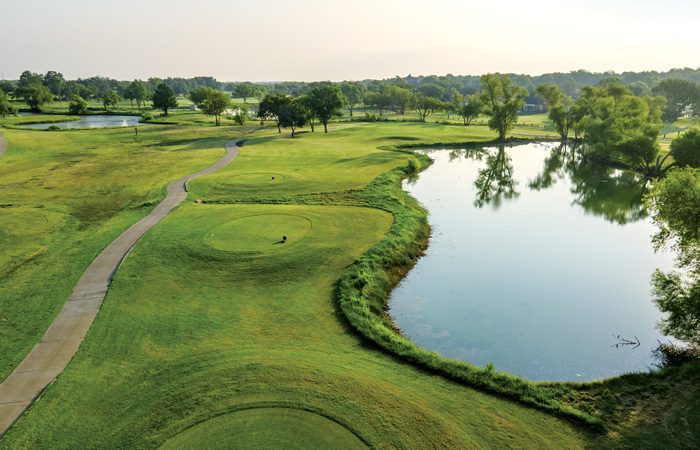
The par-5 14th doglegs along the edge of the course to the left and requires those who hit a cut-shot off the tee to almost start their tee shot over the corner of the adjacent property. Those players who can hit a long draw are at an advantage here, as the extra roll helps any potential chance to reach the green in two. Beware of the trio of bunkers down the left side, as any tee shot that ends up here means an automatic layup. Those players who choose to lay up will need to make sure they have an accurate yardage for their third, as the green is deep from back to front, meaning a wedge that comes up short could leave a difficult two-putt.
A final par 3 rounds out this trio. This is the longest par 3 on the property, playing a muscular 221 from the back set of tees. Although this is a big boy par 3, it does typically ride the prevailing south wind, so at times it doesn’t play quite as long as it reads. Even with that being the case, it will still likely require a long-iron or even a hybrid for most everyone but the long hitters.
No. 16 is the final par 5 of the round and offers a chance at another birdie on the card. There is out of bounds left, so be aware to keep any tee shots up the right side, even if you miss the fairway. This hole plays 561 from the tips, so it will likely be a layup for everyone but the true apex predator long hitters. Choose a proper number and try to stick a wedge for your best chance to secure a four.
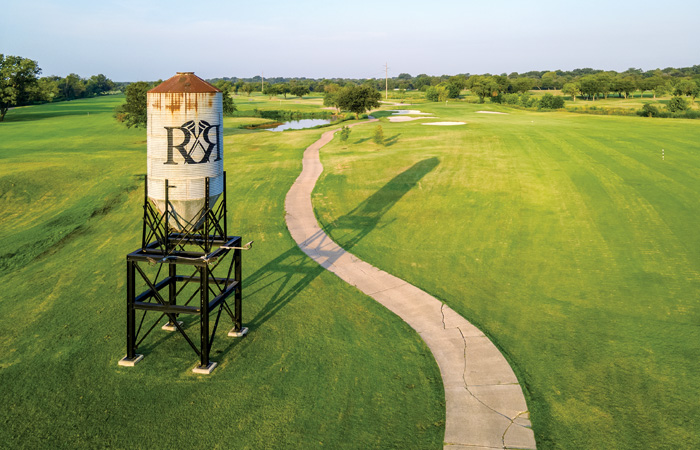
No. 18 on this Dick Phelps design is a dogleg right back up the hill toward the clubhouse. It is almost like playing No. 1 in reverse. A driver up the left center of the fairway is perfect, but the approach plays uphill to a massive green, so players really need to be sure of the number they choose on approach and make a final good iron swing or risk a tough up-and-down or a lengthy effort that could lead to the three-putt finish.
During the 2017 renovation, the clubhouse was expanded and is a perfect spot for drinks and dining before or after the round. Rusted Rail is also a great course for your next corporate event or charity scramble, with their large outdoor pavilion called The Venue, that can serve as the staging area for tournament check-in and for awards and dining afterward.
The Venue can also host weddings and other events. Just 30 minutes from Downtown Dallas, The Venue and Rusted Rail offer a great and budget-friendly spot for a wedding that has some country feel, without making your Metroplex guests travel too far. There are outdoor and indoor options, so no matter what time of year you are planning your event, your guests will be comfortable.
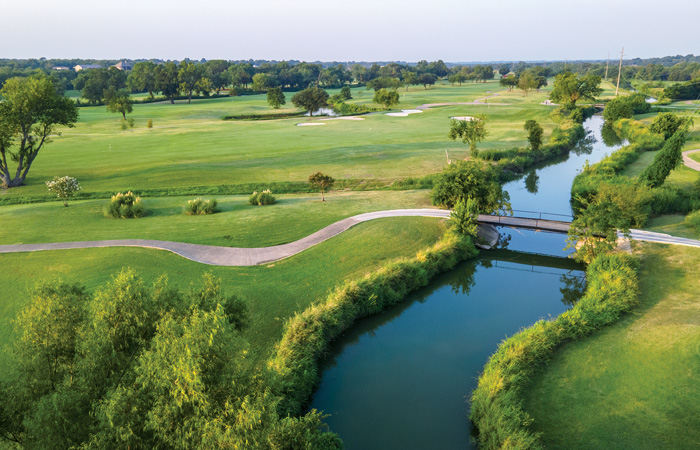
In addition to hosting your special event, this family friendly property also offers regular events like craft nights, live music, skins and scramble games and even karaoke.
Rusted Rail is a course that presents players with fun routing and a great collection of challenging holes. Course conditions were very good considering the recent heat, and the staff is friendly and accommodating. Despite being a little bit outside the Metroplex, don’t expect this to be a place you can zoom around in three hours. There are plenty of local regulars who play often, which makes this your pretty standard four-hour round, especially during peak hours.
Overall, Rusted Rail is one of the better values in the area, should you be willing to make the drive. At just $60 to play at peak times, this is one of the better layouts and is in great shape for that price point. Ownership at Rusted Rail has worked tirelessly over the last several years to make this a great overall experience, and I must say, it is definitely paying off. Don’t miss Rusted Rail for great golf and a great experience at a budget-friendly rate.



